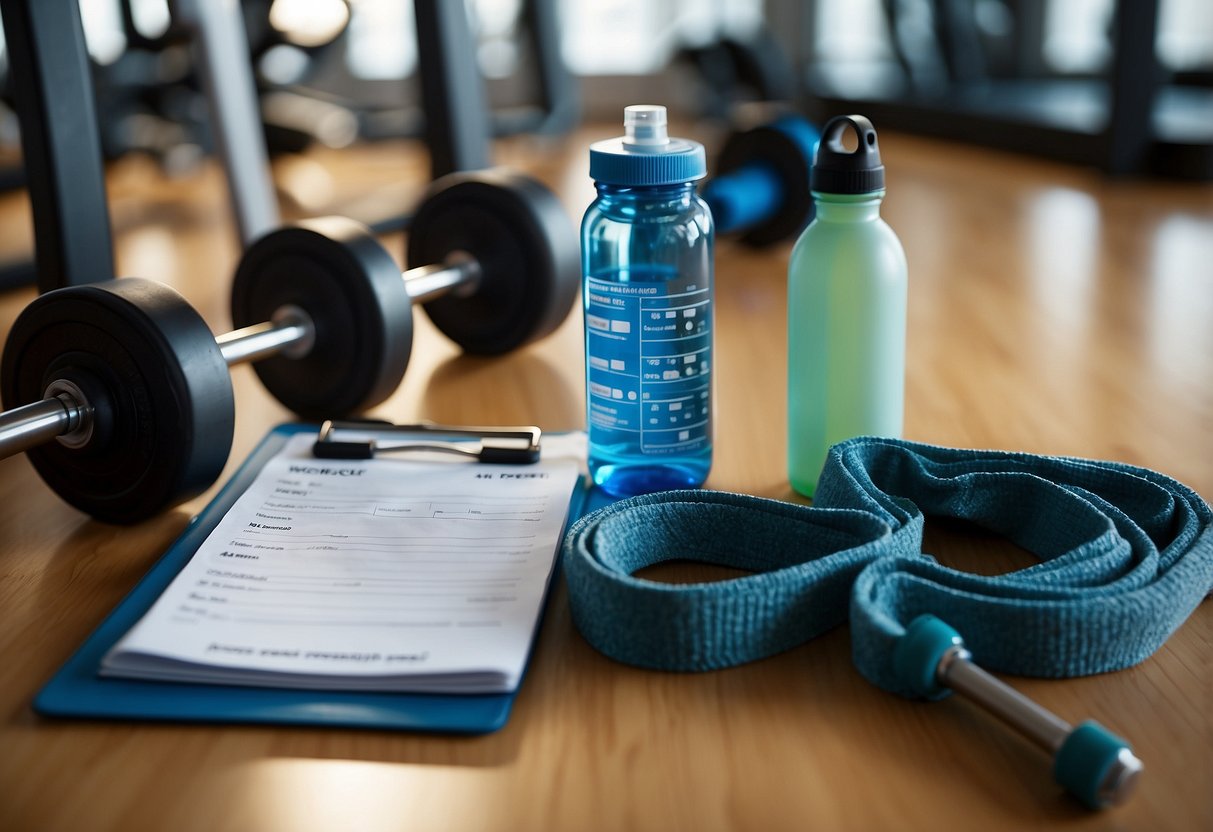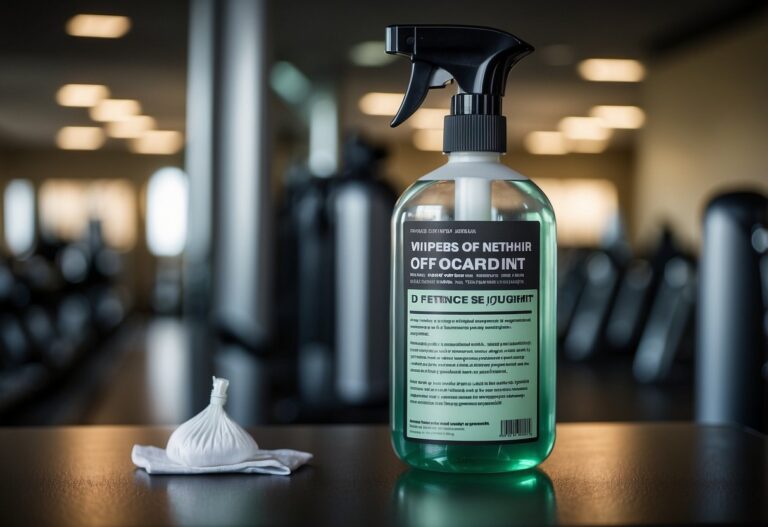Working out effectively is essential for achieving your fitness goals. Whether you’re looking to build muscle, lose weight, or just stay active, knowing how to maximise your workout can make a huge difference.

Incorporating small but smart changes into your routine can lead to significant improvements. By focusing on techniques that increase efficiency and keep you motivated, you can get the most out of every gym session.
Set specific goals
When you set goals for your workout routine, make them specific.
Instead of saying, “I want to get fit,” you could say, “I want to run 5 kilometres in 30 minutes within two months.” This gives you a clear target.
Consider what motivates you. For example, if you’re passionate about strength training, set a goal to increase your squat weight by 10 kilograms in three months.
Make sure your goals are realistic. If they’re too ambitious, you might get discouraged. On the other hand, if they’re too easy, you might not push yourself enough.
Write down your goals. Seeing them in writing can help you stay committed. Share these goals with a friend or a workout partner to keep you accountable.
Track your progress regularly. This could be through a fitness app, a journal, or even photos. It helps you see how far you’ve come and keeps you motivated.
Remember, setting specific goals can turn a vague plan into a clear roadmap. Your workouts will have more purpose, making it easier to stay motivated and see results.
Create a Workout Schedule
To start, think about how many days a week you can realistically commit to working out. Aim for at least three days a week.
Decide on the length of your workouts. If you’re short on time, even 20 to 30 minutes can be effective.
Plan your exercises based on different muscle groups. For example, focus on legs one day and upper body the next.
Include a mix of activities you enjoy, such as running, strength training, or yoga. This helps keep you motivated.
Be sure to schedule rest days to allow your body to recover. Listen to your body and adjust your schedule as needed.
Keep track of your workouts to monitor your progress and make changes as you improve.
Track your progress
Keeping track of your progress is essential to your workout routine. It helps you stay motivated and focused.
You can use simple tools like a fitness diary or apps to note down your achievements. It gives you a clear picture of how far you’ve come.
Seeing improvements, even small ones, boosts your confidence. It makes you want to push harder.
Using apps like Asana simplifies the tracking process. They let you log your workouts, track time, and set goals effortlessly.
Writing in a journal for just five minutes a day can help too. Reflect on your day’s exercise to see patterns and areas for improvement.
Use Proper Form
When working out, using proper form is crucial for avoiding injuries and getting the most out of your exercises.
For instance, when weight training, keep your movements controlled and breathe properly. Exhale as you lift and inhale as you lower the weight.
While running, keep your arms and hands relaxed. Imagine you’re holding an egg in each hand that you don’t want to break. This helps prevent unnecessary tension from your hands up to your shoulders.
Incorporate strength training
Strength training is crucial for building muscle and enhancing your overall fitness. To start, focus on basic exercises like squats, push-ups, and lunges. These movements engage multiple muscle groups and establish a strong foundation.
Adding a warm-up routine is essential. Use light cardio or a foam roller to wake up your muscles. This can prevent injuries and improve your performance during workouts. A proper warm-up helps your body handle the demands of strength training better.
Consistency is key. Schedule your strength training sessions at least twice a week. Adjust the frequency based on your goals and fitness level. Remember, progress takes time, so be patient and stay committed.
Stay Hydrated
One key to working out more effectively is staying hydrated. When you exercise, your body loses water through sweat. Keeping your water levels up helps maintain your energy and performance.
Drink a glass of water when you wake up and before meals. This simple step helps ensure you are well-hydrated before you start your day or hit the gym.
Carry a water bottle with you during your workouts. It serves as a reminder to drink regularly and keeps hydration handy. You can even use a bottle with marked measurements to track your intake.
Consider adding flavour to your water if plain water seems boring. Lemon, lime, or even a splash of fruit juice can make it more enjoyable. This can encourage you to drink more throughout the day.
Remember, staying hydrated isn’t just about water. Coconut water, tea, and even certain fruits and vegetables contribute to your fluid intake. Make sure to include these in your diet to help meet your hydration needs.
Staying hydrated can prevent fatigue, improve recovery, and enhance your overall workout experience. Keep sipping and stay energised!
Warm-up and cool-down
Warming up before exercise is essential. It helps increase your heart rate and blood flow to muscles. Start with light activities like walking or jogging for 5 to 10 minutes. This prepares your body for more intense exercise and helps prevent injuries.
Cooling down is just as important. After your workout, continue at a lower pace. If you’ve been running, consider walking briskly for 5 to 10 minutes. This helps your body gradually return to its resting state.
Don’t forget to stretch during your cool-down. Stretching helps relax muscles and improve your flexibility. Hold each stretch for about 20 to 30 seconds for the best results. For some good tips, check out this advice from the Mayo Clinic.
Get Adequate Rest
Rest is essential for effective workouts. Your muscles need time to recover and rebuild after exercise. Without enough rest, you risk injury and burnout.
Try to get at least 7-9 hours of sleep each night. Sleep is when your body does most of its repair work. You’ll feel more energised and ready for your next workout.
Consider incorporating short naps into your routine. A quick 20-minute nap can boost your alertness and performance. Just be sure not to nap too long, as it can interfere with your nighttime sleep.
Engage in restful activities like reading or taking a bath. These can help you relax and improve your sleep quality. For more tips on restful activities, check out this article on how to get real rest.
Mix up routines
It’s easy to fall into the trap of doing the same exercises every week. To keep things fresh, try swapping your routine regularly. This not only keeps you engaged but also challenges different muscle groups.
By mixing up your routines, your body won’t get used to the same movements. This promotes continuous improvement and helps you avoid plateaus. Try alternating between running, strength training, and yoga.
Using different equipment like kettlebells, resistance bands, or even bodyweight exercises can also bring variety. Adding new exercises or modifying existing ones can make a big difference in your progress.
Find a Workout Buddy
Having a workout buddy can significantly boost your motivation. When you know someone is counting on you, you’re less likely to skip your exercise routine.
If meeting up in person is tough, don’t worry. You and your workout partner can still connect over a video call or work out at the same time in different locations. This way, you can keep each other accountable without being in the same place.
You can also find a workout buddy by talking to friends or people at the gym. Joining a group fitness class or volunteering for a local race are great ways to meet like-minded individuals.
Another benefit is that working out with a buddy can make the experience more enjoyable. Exercising with a friend can reduce stress and improve your quality of life.
Understanding Effective Workouts
Achieving effective workouts involves setting realistic goals, maintaining consistency, and tracking progress over time. Here’s how to master each aspect to enhance your fitness journey.
Importance Of Setting Realistic Goals
Setting realistic goals is crucial for staying motivated and achieving success. Start by identifying what you want to accomplish, whether it’s losing weight, building muscle, or improving endurance. Break these goals into smaller, achievable steps.
For example, if you aim to run a marathon, begin with running shorter distances and gradually increase this over time. Setting clear, measurable goals like “lose 5 kg in three months” can keep you focused and make your progress tangible.
Remember, your goals should be specific, measurable, achievable, relevant, and time-bound (SMART). This approach not only boosts your confidence but also helps prevent burnout and injuries.
Role Of Consistency And Routine
Consistency is key to seeing real results from your workouts. Establishing a regular routine ensures that exercise becomes a non-negotiable part of your day. Whether it’s working out every morning or dedicating time each evening, consistency helps build momentum.
Create a schedule that fits your lifestyle and stick to it. Mix different activities like strength training, cardio, and flexibility exercises to keep things interesting. This diversity can prevent boredom and help you work on different muscle groups.
Small habits like packing your gym bag the night before or setting workout reminders can aid in sticking to your routine. Remember, a consistent routine forms the foundation of long-term fitness success.
Monitoring Progress Over Time
Tracking your progress allows you to see how far you’ve come and what adjustments are needed. Use tools like fitness apps, journals, or spreadsheets to record your workouts, including the exercises performed, sets, reps, and duration.
Regularly reviewing your progress helps identify patterns and areas for improvement. If you notice a plateau, it may be time to change your routine or goals.
Celebrate your achievements, no matter how small. Reaching milestones like lifting heavier weights or running longer distances can boost your motivation. Monitoring progress not only keeps you on track but also provides a sense of accomplishment.
By focusing on realistic goals, maintaining consistency, and keeping track of your progress, you can make your workouts more effective and enjoyable.
Optimising Workout Techniques

To get the best results from your workouts, you need to focus on warming up and cooling down, balancing different types of exercises, and incorporating intervals. Each aspect contributes to a more effective workout, helping you get stronger, fitter, and healthier.
Proper Warm-Up And Cool-Down
Starting with a proper warm-up is crucial. Warming up prepares your muscles and joints for the workout. It reduces the risk of injury and improves your performance. Try doing dynamic stretches like leg swings, arm circles, or light jogging for about 5-10 minutes.
Cooling down is just as important. It helps your body transition back to a resting state. Perform static stretches, holding each stretch for 15-30 seconds. This aids in muscle recovery and flexibility.
Balancing Cardio And Strength Training
To optimise your workout, balance cardio and strength training. Cardio exercises, like running or cycling, improve heart health and endurance. Aim for at least 150 minutes of moderate-intensity cardio each week.
Strength training builds muscle and boosts metabolism. Include exercises like squats, push-ups, and weight lifting. Try to train each major muscle group twice a week. Combining cardio and strength routines will help you achieve a well-rounded fitness level.
Utilising Interval Training
Interval training is an effective way to maximise your workouts. This involves alternating between high-intensity and low-intensity exercises. For example, sprint for 30 seconds and then walk for a minute. Repeat this cycle for about 20-30 minutes.
It’s efficient because it keeps your heart rate up, burns more calories, and improves cardiovascular fitness quickly. You can apply interval training to both cardio and strength exercises. Use this method a couple of times a week to see significant improvements in your fitness.
Nutrition And Recovery
Focusing on nutrition and recovery is crucial for enhancing your workout effectiveness. Ensuring proper hydration, choosing the right diet, and getting enough rest can significantly impact your fitness outcomes.
Importance Of Hydration
Staying hydrated is essential for optimal muscle function and recovery. You should drink enough water to replace the fluids lost through sweat. A good guideline is to consume 1.5 litres of water for every kilogram of body weight you lose during exercise. This equates to around 3 cups of fluid for every pound lost.
Electrolytes also play a key role. Besides water, consider adding electrolyte drinks to your routine to help maintain fluid balance. Electrolytes like sodium, potassium, and magnesium help replenish what’s lost through sweat. Proper hydration can reduce fatigue, improve endurance, and speed up recovery.
Nutrient-Rich Diet Choices
Your diet directly affects how well your body recovers after a workout. Consuming a mix of carbohydrates and protein within 30 minutes post-exercise can help replenish glycogen stores and repair muscle tissue. Aim for a 4:1 carbohydrate-to-protein ratio. This might include a banana with peanut butter or a protein shake with fruit.
Incorporate foods that aid in recovery, such as tart cherry juice, which helps reduce inflammation and muscle pain. Magnesium-rich foods, such as leafy greens, nuts, and seeds, support muscle relaxation and prevent cramping. Additionally, taking a good multivitamin ensures you meet daily nutritional requirements for vitamins and minerals essential for recovery.
Role Of Rest And Sleep
Rest and sleep are pivotal for muscle recovery and overall well-being. Aim for 7-9 hours of sleep per night to allow your body sufficient time to repair and rejuvenate. Sleep helps in the release of growth hormones that are essential for muscle repair.
Incorporate rest days into your fitness schedule. Giving the same muscle group at least 48 hours of rest after intense workouts prevents overuse injuries and promotes strength gains. High-intensity or heavy lifting sessions typically require 24 to 72 hours of rest. Listen to your body and adjust rest periods as needed to optimise recovery and performance.







